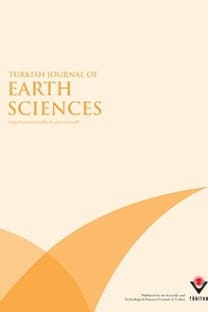Numerical Ages of Selected Rudist Bivalvia: Preliminary Results
Turkish J. Earth Sci., 19, (2010), 769-790. Full text: pdf Other articles published in the same issue: Turkish J. Earth Sci., vol.19, iss.6.
Numerical Ages of Selected Rudist Bivalvia: Preliminary Results
Turkish J. Earth Sci., 19, (2010), 769-790. Full text: pdf Other articles published in the same issue: Turkish J. Earth Sci., vol.19, iss.6.,
- ISSN: 1300-0985
- Yayın Aralığı: 6
- Yayıncı: TÜBİTAK
Tvrtko KORBAR, Blanka Cvetko TESOVIC, İvo RADOVANOVI
Maastrichtian Rudist Fauna from Tarbur Formation (Zagros Region, SW Iran): Preliminary Observations
Ahmad Reza KHAZAEI, Peter W. Skelton & Mehdi YAZDI, Mehdi YAZDI
Tarla ALCEO, Tunis GIORGIO, Radocic RAJKA
Ann MOLINEUX, Robert W. SCOTT, Jessie MAISANO
Albian rudist fauna from the Karaburun Peninsula, İzmir region, western Turkey
Talip GÜNGÖR, İsmail IŞINTEK, Pierre Jean MASSE, Mükerrem Fenerci MASSE
Karaburun Yarımdası’ndan Albiyen Rudist Faunası, İzmir Bölgesi, Batı Türkiye
Jean-pierre MASSE, Mükerrem FENERCİ-MASSE
Campanian pseudosabinia from the pučišća formation on the island of Hvar (Adriatic sea, Croatia)
Peter W. SKELTON, Blanka Cvetko TESOVIC, IVO RADOVANOVIC, Katarina KRIZMANIC, Thomas STEUBER, Tvrtko KORBAR
